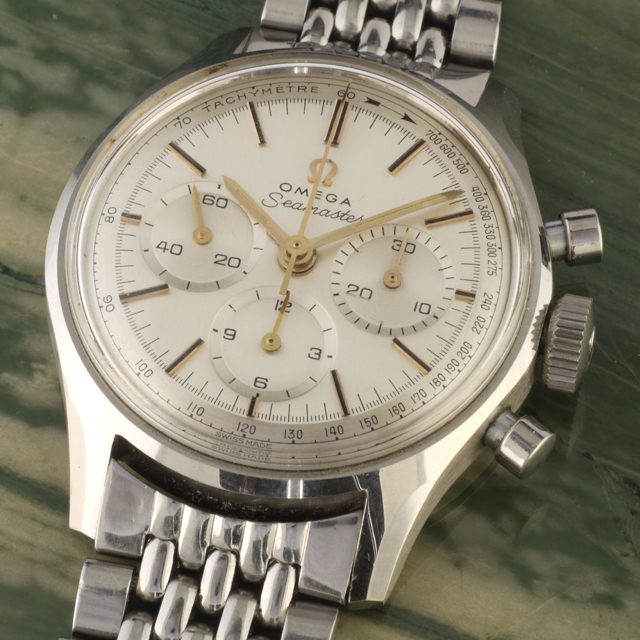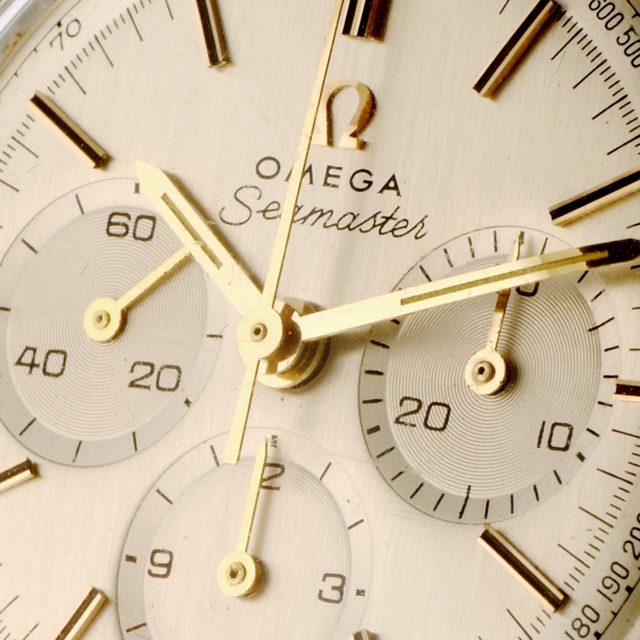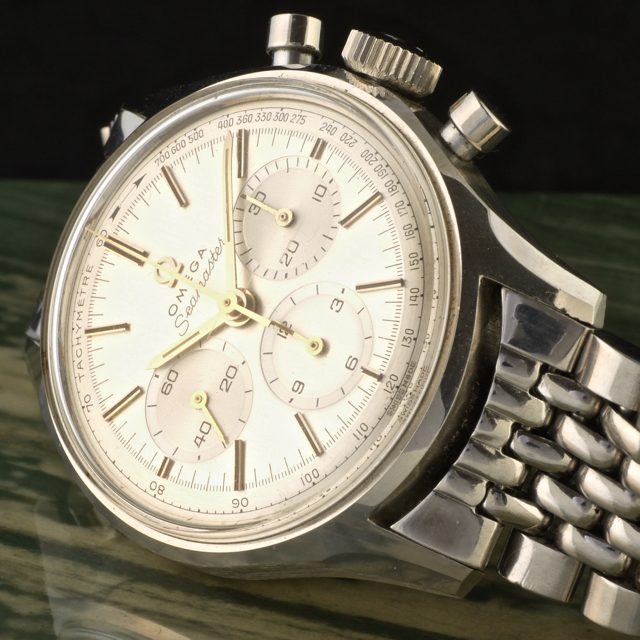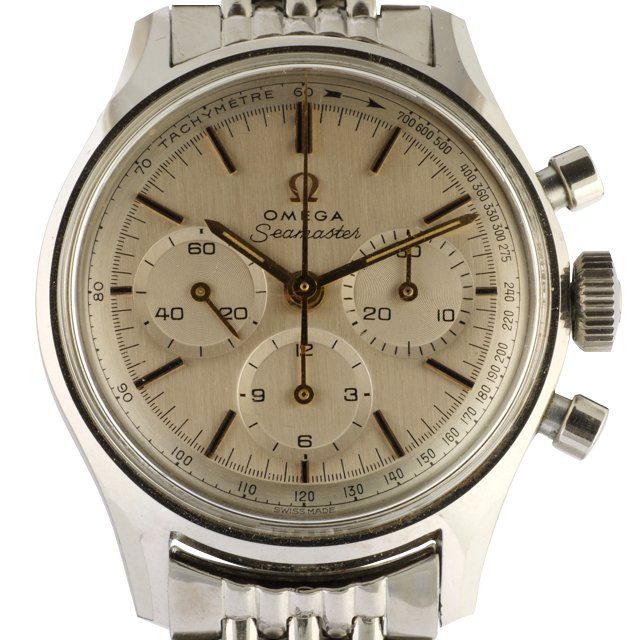



Omega Seamaster Tachymeter
Soviet cosmonaut Aleksei Leonov performs the first spacewalk1965 Omega Seamaster cal. 321 ref. 2451-8, 35mm. case, breads of rice band and tachymeter scale to measure how fast an object is moving. The scale can be found either on the dial or in the bezel. Most tachymeters start at 400 and end at 60, but some models can show different numbers. Its very simple to calculate the speed: just mark a point and push the start button. After the object has moved for one kilometer (or mile), push the stop button. The number indicated by the hand shows the speed of the object.
The Omega Caliber 321 chronograph movement is a thing of legend. After all, it has been to the Moon, the iconic Speedmaster wasn’t the only Omega chronograph made in the 1960s to utilize this high grade manually wound unit. It also found its way into the considerably less common, one might even say rare, Seamaster chronographs from the same era. The Seamaster line was, at the time, the more stylish alternative – more about the looks than about its technical capabilities. But with the addition of the Caliber 321 it was no less proficient a timing tool.
Launched in 1948 to coincide with the brand’s 100th anniversary, the Omega Seamaster line is the oldest in the current collection. Loosely based on the waterproof wristwatches made for the British military at the end of World War II, the Seamaster was first intended as a robust yet elegant watch for active individuals who wanted a watch for town, sea and country.
The Seamaster’s first diving-record was achieved in 1955, when diver Gordon McLean reached a depth of 62.5 meters in Australia.
The key to these watches was the O-ring rubber gasket. At this time, water-resistant watches generally used lead or shellac gaskets which were susceptible to temperature changes. The engineers at OMEGA were so sure of the Seamaster that one flew the Polar Route over the North Atlantic attached to the outside of a Douglas DC6 aircraft in 1956.
I consider the Seamaster two lines in one: the big, heavy Professional, designed for divers for deep diving, and a dress range also made by Seamaster.
Omega was founded in 1848 by Louis Brandt at the age of 23. The brand’s reputation grew fast and in 1895 the watches achieved a precision of 30 seconds a day.
By the turn of the 19th century Omega was one of Switzerland’s largest watch companies with 240,000 watches produced annually and employing 800 people.
Omega made its debut in sports during the Gordon Bennett international ballooning Cup in 1917; since then Omega has gone on to be the official timekeeper at 21 Olympic Games.
In 1936 Omega set the remarkable World precision record of 97.8 points at the Kew-Teddington observatory in England.
In 1957, with motorsport in mind, Omega launched the Speedmaster, which in 1965 was chosen by NASA as its official chronometer in Space. Four years later the Moonwatch was the first watch to be worn on the Moon, when on 21st July 1969 Neil Armstrong made his giant leap for mankind. Currently Omega belongs to the Swatch Group.
